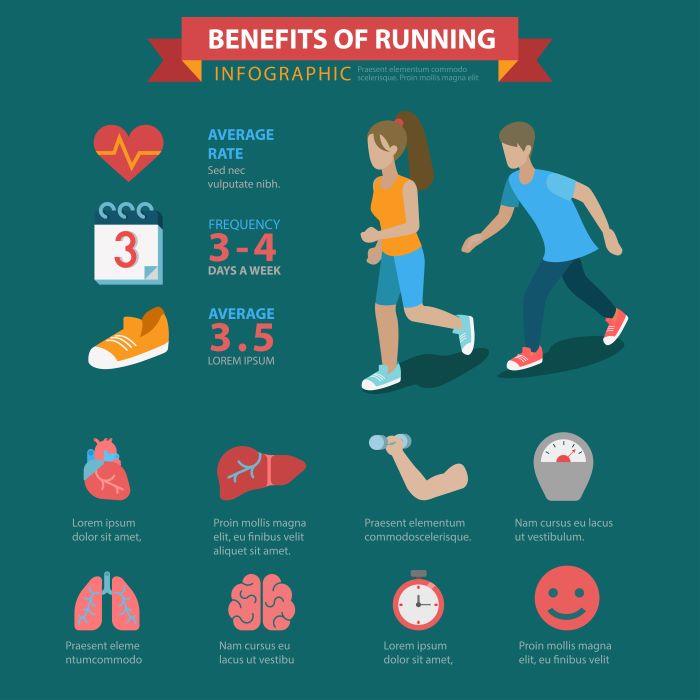Embarking on a half marathon journey is an exciting and transformative experience, especially for women looking to enhance their fitness levels. A well-structured training plan can make all the difference, as it not only prepares you physically but also mentally for the challenges ahead. The half marathon training plan for women’s health is designed to cater to the unique needs and capabilities of female runners, ensuring that each step you take leads you closer to your personal goals.
As you dive into this fitness adventure, consider the following essential components of a successful training regimen:
- Gradual mileage increase: This prevents injuries and builds endurance.
- Cross-training: Incorporating activities like cycling or swimming can enhance overall fitness.
- Rest days: Vital for recovery and muscle repair.
Nutrition also plays a pivotal role in your training. A balanced diet rich in carbohydrates, proteins, and healthy fats will fuel your workouts, while staying hydrated is crucial for peak performance. To cultivate a supportive environment during your training, joining a running community can provide motivation, camaraderie, and accountability.
Ready to take the first step towards your half marathon goals? Visit our website to learn more and get started today! Click here.
Benefits of Half Marathon Training for Women’s Health

Training for a half marathon offers numerous benefits specifically tailored to enhance women’s health. Whether you are a seasoned runner or just starting out, the positive impacts of a structured training plan are profound.
Some of the key benefits include:
- Improved Cardiovascular Health: Engaging in regular running increases heart efficiency and lowers blood pressure, significantly reducing the risk of heart disease.
- Weight Management: A half marathon training plan promotes calorie burning and helps in maintaining a healthy weight, which is crucial for overall well-being.
- Mental Health Boost: Running releases endorphins, often referred to as ‘feel-good hormones’, which can alleviate symptoms of anxiety and depression.
- Enhanced Bone Density: Weight-bearing exercises like running strengthen bones, reducing the risk of osteoporosis, especially important for women as they age.
- Empowerment and Confidence: Completing a half marathon instills a sense of achievement, boosting self-esteem and confidence while empowering women to set and accomplish their fitness goals.
Moreover, participating in a half marathon often fosters a sense of community among female runners. This connection can be invaluable, as sharing experiences and challenges with others enhances motivation and commitment to your training regimen.
Key Components of an Effective Training Plan

Creating an effective half marathon training plan requires a comprehensive approach that incorporates various essential components. Understanding these key elements will help you maximize your training and prepare for race day.
Here are the fundamental components that should be included:
- Consistent Mileage: Gradually increasing your weekly mileage is crucial. Aim for a mix of long runs, easy runs, and speed workouts to build endurance and strength.
- Long Runs: Designate one day a week for a long run, gradually increasing the distance. This is vital for building stamina and getting your body accustomed to the duration of the race.
- Interval Training: Incorporate speed workouts into your training plan. These high-intensity sessions improve your pace and help build cardiovascular fitness, making you a stronger runner.
- Cross-Training: Engage in complementary activities like cycling, swimming, or yoga to enhance overall fitness, prevent burnout, and reduce the risk of injuries.
- Rest and Recovery: Allow for adequate rest days to enable your body to heal and adapt. Recovery is just as important as the workouts themselves, as it helps prevent overtraining.
Incorporating these components into your half marathon training plan will not only prepare you physically but also mentally for the challenges ahead. Tailoring your plan to fit your individual needs and goals will further enhance your training experience and performance.
Nutrition Tips to Fuel Your Half Marathon Journey

Nutrition plays a vital role in your half marathon training plan, especially when it comes to fueling your body for optimal performance. Proper nutrition not only supports your training but also aids in recovery and overall health. Here are some essential nutrition tips to help you along your half marathon journey:
- Hydration: Staying well-hydrated is crucial. Aim to drink plenty of water throughout the day and consider electrolyte drinks during long runs to replace lost fluids and minerals.
- Carbohydrates: Carbs are your main source of energy. Include whole grains, fruits, and vegetables in your diet to ensure you have sufficient glycogen stores for your runs.
- Protein Intake: Incorporate lean proteins such as chicken, fish, beans, and legumes to aid in muscle repair and recovery post-workout. Aim for a protein-rich meal or snack within 30 minutes after your runs.
- Healthy Fats: Don’t shy away from healthy fats like avocados, nuts, and olive oil. They provide essential fatty acids that support overall health and energy levels.
- Pre-Race Nutrition: Experiment with your pre-race meals during training. Focus on easily digestible carbs, and avoid heavy or spicy foods that might upset your stomach on race day.
By prioritizing your nutrition, you can enhance your training effectiveness and prepare your body for the demands of the half marathon. Remember, a well-fueled runner is a successful runner!
Injury Prevention Strategies for Women Runners
Injury prevention is crucial for women runners, particularly when training for a half marathon. Women may face unique challenges, including differences in biomechanics and hormonal fluctuations, which can increase the risk of certain injuries. Here are some effective strategies to help you stay injury-free on your running journey:
- Listen to Your Body: Pay attention to any discomfort or pain. Ignoring warning signs can lead to more severe injuries. If something feels off, it’s essential to rest and seek professional advice if needed.
- Proper Footwear: Invest in a good pair of running shoes that fit well and provide the right support for your foot type. Replacing shoes regularly can prevent injuries associated with worn-out footwear.
- Strength Training: Incorporate strength training exercises to build muscle strength, particularly in your core, hips, and legs. Strengthening these areas can enhance your running form and reduce the risk of injuries.
- Cross-Training: Add variety to your workouts with cross-training activities such as swimming, cycling, or yoga. These low-impact exercises help improve overall fitness while giving your running muscles a break.
- Gradual Progression: Increase your mileage and intensity gradually. Follow the 10% rule: never increase your weekly mileage by more than 10% to avoid overuse injuries.
By implementing these injury prevention strategies, you can enjoy a safer and more effective training experience, ensuring that you stay on track toward completing your half marathon.
Joining a Supportive Running Community

Being part of a supportive running community can significantly enhance your half marathon training experience. Surrounding yourself with like-minded individuals not only provides motivation but also fosters a sense of belonging. Here are some key benefits of joining a running community:
- Accountability: When you commit to a group, you’re more likely to stick to your training plan. Having running partners can motivate you to show up for workouts, even on days when you might feel less inclined.
- Shared Knowledge: Engaging with fellow runners allows you to exchange tips and experiences. Whether it’s about nutrition, injury prevention, or race strategies, you can learn from others who have walked a similar path.
- Social Connections: Running can sometimes feel isolating, especially during long training runs. Being part of a community creates opportunities for friendships and social interactions, making your training more enjoyable.
- Group Runs and Events: Many running communities organize group runs, races, and events that can enhance your training. Participating in these activities can provide a different experience and expose you to new routes and challenges.
- Mental Support: Training for a half marathon can be as much a mental challenge as a physical one. A supportive community can help you stay positive, share encouragement, and celebrate your milestones, no matter how small.
Joining a running community is a great way to enhance your training journey. Visit our website to learn more and get started today! Click here.


